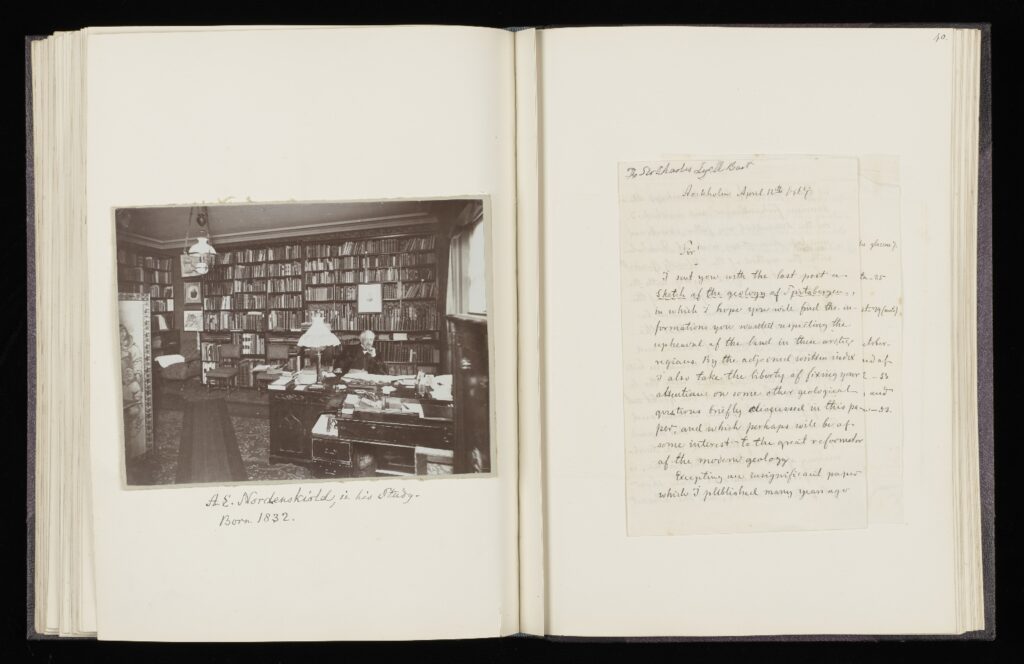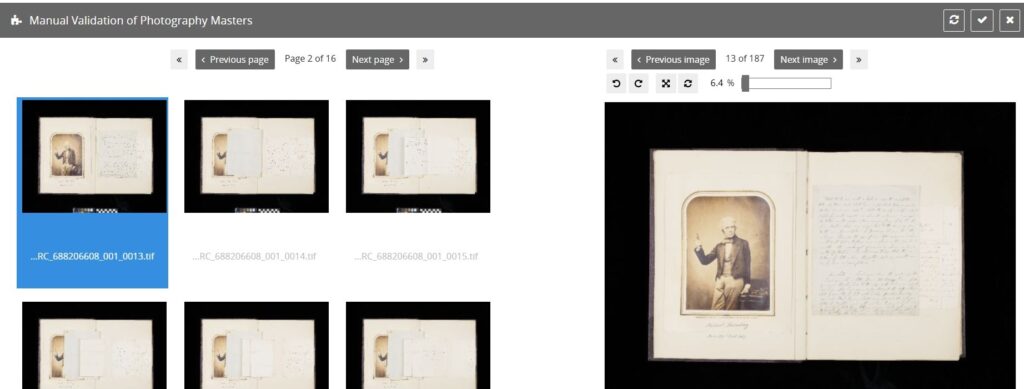
If you have been following the CHDS blog for the past few years you will have seen some of our content relating to the digitisation of the Charles Lyell Collection held by the University of Edinburgh (links to some of our past blogs can be found here and here). This collection is made up of material belonging to the Geologist, Sir Charles Lyell (1797-1875) and contains geological specimens, around 300 notebooks, correspondence, and other papers relating to his work.
Lyell’s collections came to the University in two tranches, one major gift dating 1927 and then a second acquisition in 2019-2020, however, some items that had been previously sold separately by the family had remained in private hands. Two recent items originating from the Lyell family, and acquired by the University, are two albums, that were compiled by Sir Charles’ nephew, Leonard Lyell (1850 –1926). These albums are made up of letters that were sent to members of the Lyell family by a variety of scientists and scholars including figures such as Michael Faraday (1791 – 1867) and Ralf Waldo Emmerson (1803 – 1882). The letters are also mostly accompanied by a portrait of the sender on the opposite page.

These albums were captured by one of our talented photographers, Juliette Lichman, who has worked on the digitisation of the Charles Lyell Collection for several years. However, capturing the images is only the beginning of the digitisation process! Once the photographers have done their job, the images need to be quality assured and processed through software known as Goobi . Goobi is an open-source software application created by Intrada that we in CHDS use to process large numbers of images of archival material – such as books or letters. We have previously used it to process in excess of 110,000 images, including Charles Lyell’s notebooks and other digitisation projects such as the Witness Newspaper.
Goobi allows us to check the images, crop them, order them correctly and add page numbers and other relevant metadata before they are exported to our Image Collections website. After images are uploaded into Goobi it runs some automated processes including checking the format of the images are correct and attaches relevant data from the online catalogue including the title, shelf mark and the author or creator. The first step the user then sees is called ‘Manual Validation’, which allows each image to be viewed in turn, looking for any missing pages or obscured text and zoom in to check they are in focus.

When the first stage is completed, the images are sent to ‘Layout Wizzard’ where each image is cropped and rotated or straightened as necessary, leaving a small border around each page to show that the full page has been captured.

Next, the images go to ‘Production images QA’ , providing a final overview of all the images before they are sent to ‘Metadata Indexing’. This final stage in Goobi allows us to add pagination to the images and other metadata relating to specific features of the volume such as front and back covers. Once this step is completed, the images are processed by Goobi, which packages the images and metadata together and finally saves the files on our servers ready for digital preservation. From here the cropped images and attached metadata can then be uploaded to our Image Collections website, ready to view.

We hope that this blog has given you some insight into a few of the steps behind the scenes that go in to making our images of the Heritage Collections available to the public. The completed images of the two Lyell Albums can now all be found on the University’s Image Collections website here and here.
If you would like to find out more about the albums, you can find the latest “Through Lyell’s Eyes” blog here!
Miranda Strachan, Digitisation Operator
Be First to Comment